To Berberis Home
Berberis Stem Dimorphism & Shrub Architecture
by Bob Harms

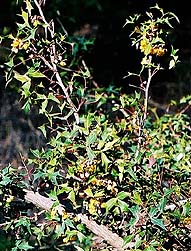
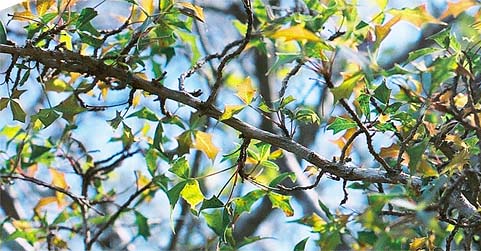
B. trifoliolata, spring 2005.
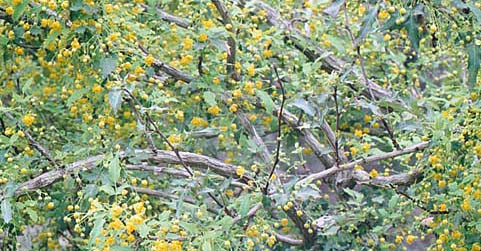
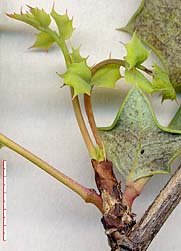
B. swaseyi, spring 2005 (left) — 3 July, 2004.
B. trifoliolata and B. swaseyi shrubs exhibit slightly different stem dimorphism; i.e., an architecture of long shoots and short shoots. Long shoots constitute the major axes of the bush, determining its height and width. Short shoots, which arise at nodes along these axes, have no internode stem elongation, producing short lateral branches covered entirely with compressed sequences of bud scales (or their remnants). Most new growth – leaves, inflorescences and shoots – emerge from the bud scales at (or near) the shoot tips – as illustrated immediately below and in the rightmost images above and immediately below, which additionally show short shoots arising at the apex of a long shoot as well as from other short shoots.
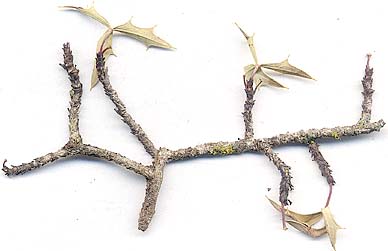
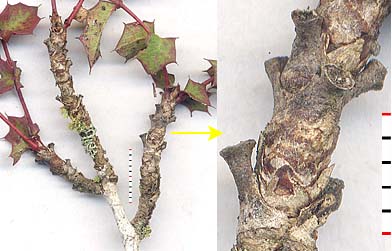
B. trifoliolata (left), February — B. swaseyi, spring 2005.
In the enlarged area of the above B. swaseyi shoot (yellow arrow) can be seen the fascicled persistent petioles (up to the lowest rachis node) for the reduced leaflet pair, as well as remnants of old budscales.
Apparent differences for B. swaseyi are:
- Long shoot internodes are generally longer, creating a more open, less dense shrub. To illustrate this a 30 cm. section (between yellow markers) of somewhat older branches with fewer leaves is shown for each species.

B. swaseyi.

B. trifoliolata – long shoot traced with yellow above leaves.
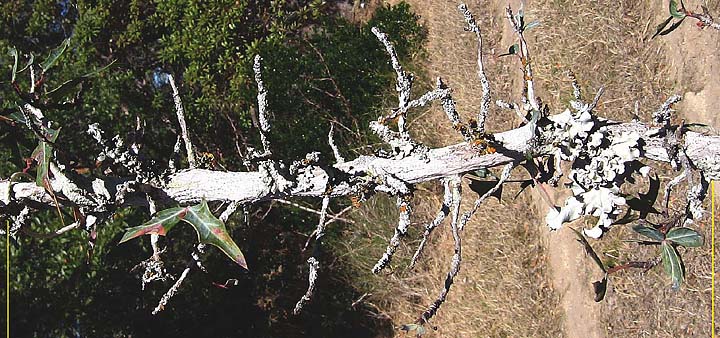
Closely spaced short shoots on older B. trifoliolata branch with very few leaves.
- Long shoots commonly arise from both long and short shoots, giving rise to the 'intricate shrub' description of Correll & Johnston 1970. Note the numerous younger, narrower lateral long shoots in the flowering view at the top of page. From my own experience I would not expect to find a B. trifoliolata bush with comparable structure. With B. trifoliolata long shoots generally arise from short shoots only when the long shoot apex is damaged (such as by herbivores).
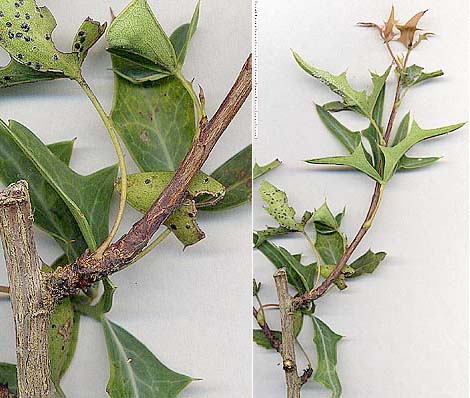
B. trifoliolata long shoot arising from short shoot as the result of damage to the original long shoot apex (left fork).
Complex B. swaseyi shoot sequencing is illustrated below.
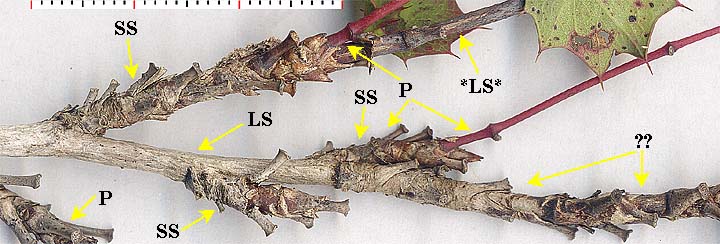
Complex B. swaseyi shoot sequence.
SS = short shoot, LS = long shoot, P = petiole, ?? = budscales/petioles eroded away.
Whittemore (FNA) provides the following stem/shoot descriptions:
- B. trifoliolata:
- Stems

